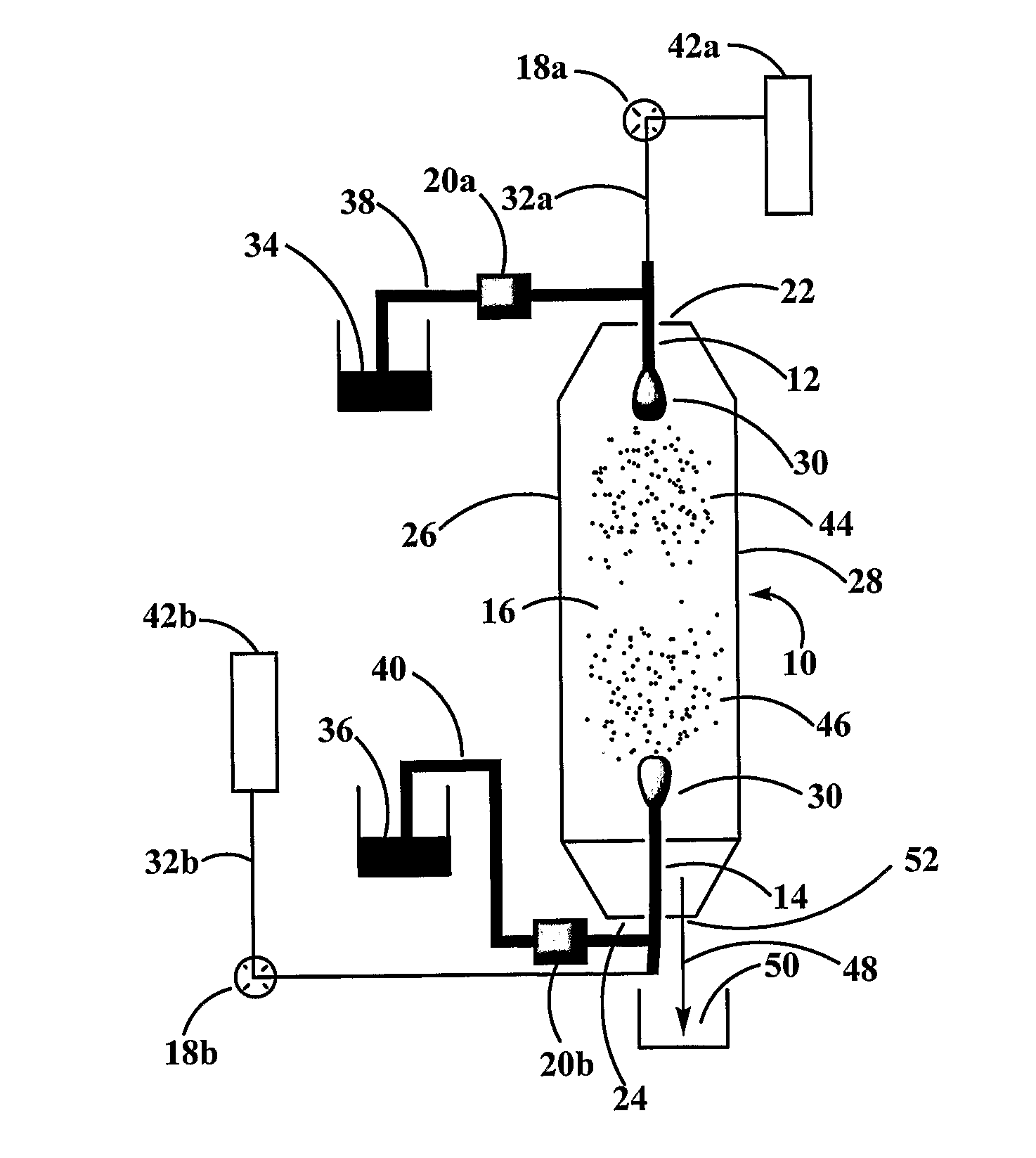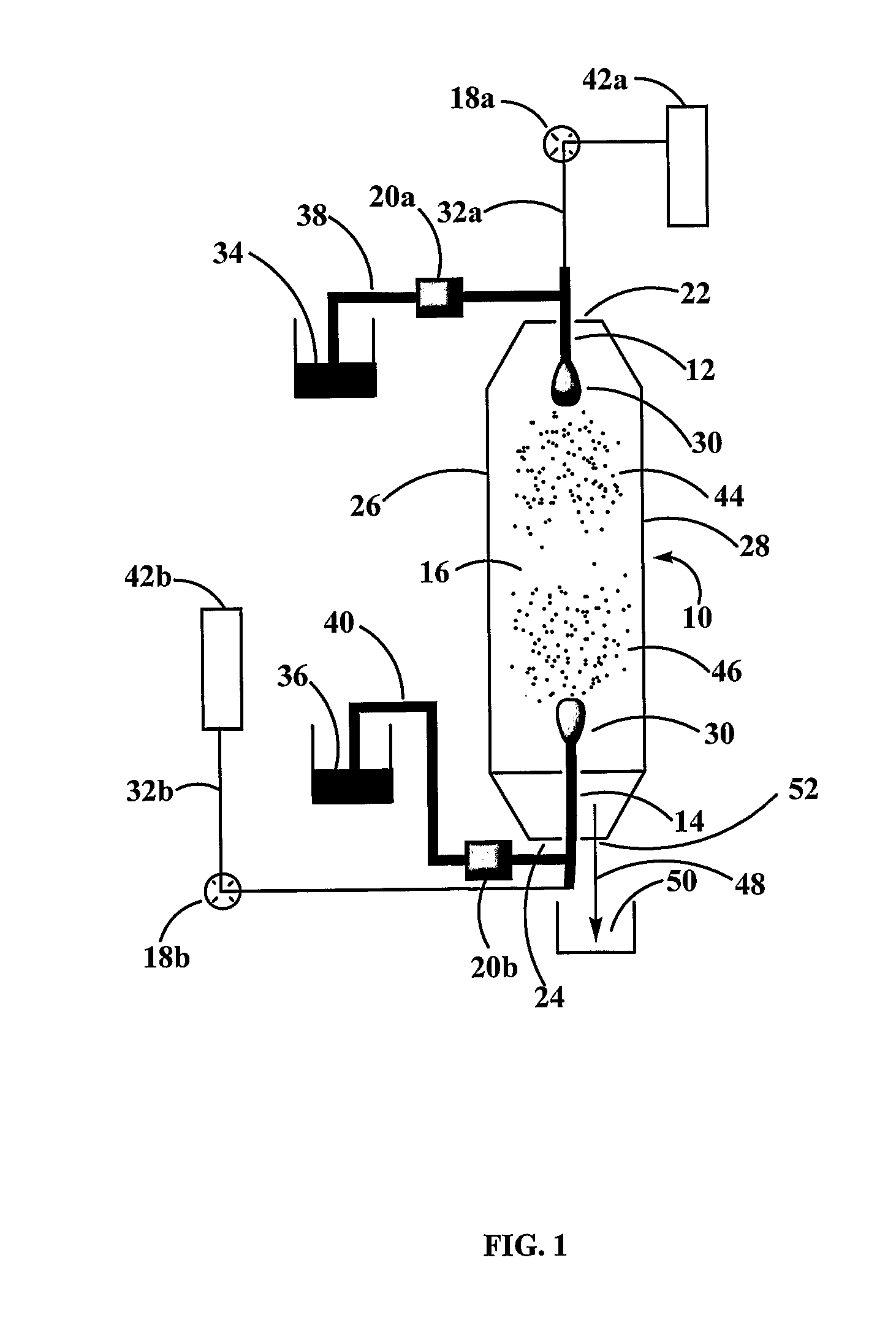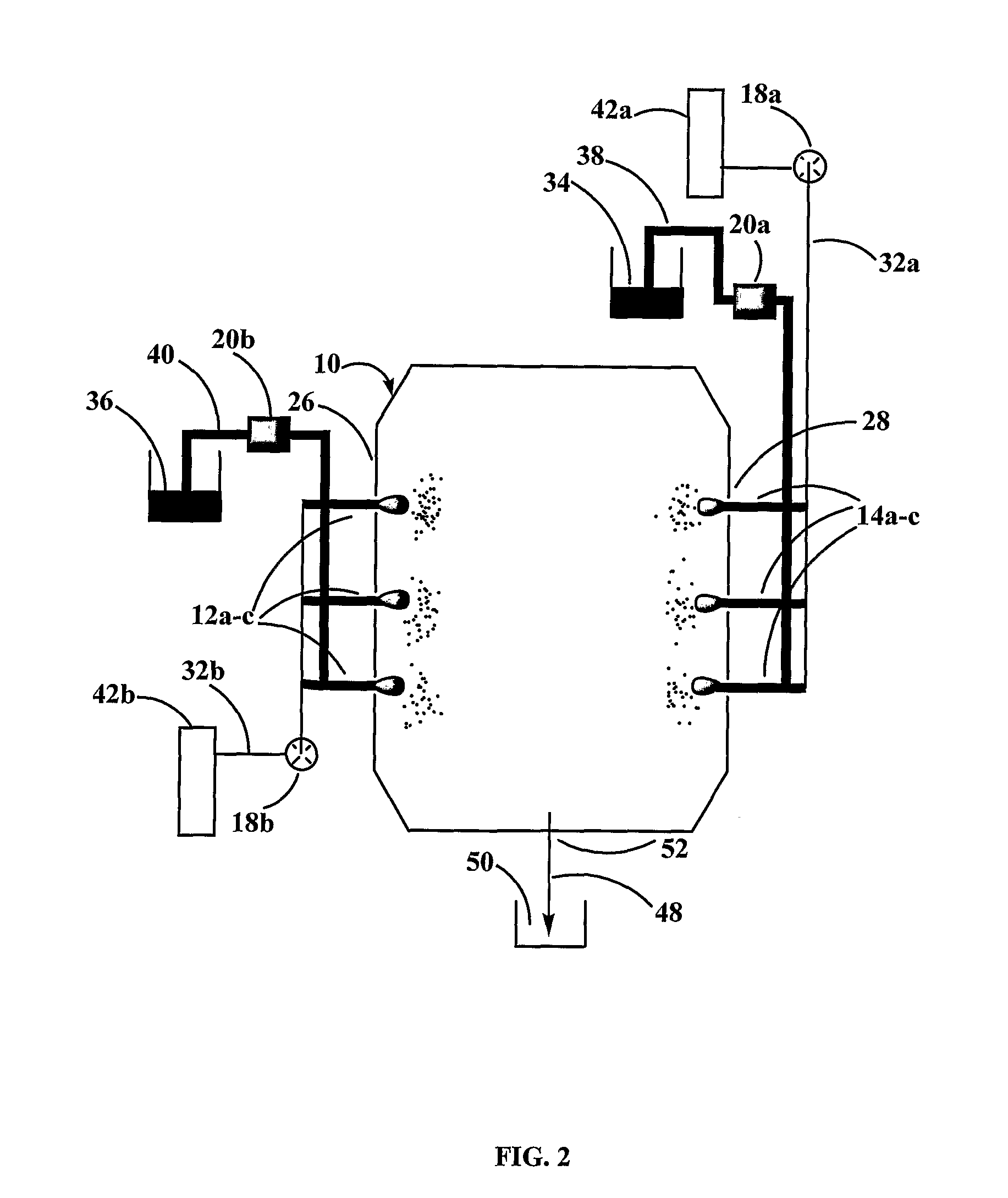Device and method for preparing microparticles
a technology of microparticles and devices, applied in the direction of detergent powders/flakes/sheets, granular delivery, peptide/protein ingredients, etc., can solve the problems of limited choice of coating materials available, unsuitable scaling-up and subsequent applications, degradation and/or oxidation of some active materials,
- Summary
- Abstract
- Description
- Claims
- Application Information
AI Technical Summary
Benefits of technology
Problems solved by technology
Method used
Image
Examples
example 1
Preparation of Sodium Alginate and Calcium Chloride Solutions
[0112]Sodium Alginate solutions of concentrations 1-3% (w / w) were prepared in deionised water. Before reacting with CaCl2, methylene blue was added to alginate solutions to enable viewing of the formed microgel particles.
[0113]The CaCl2 solutions were prepared at the concentrations of 1-3% (w / v) in deionised water. The Calcium chloride solutions were reacted with the Na-alginate solutions randomly by varying the Na-alginate flow rate and the pressure.
Atomisation and Microgel Recovery
[0114]Sodium alginate solution was fed and atomised from the top nozzle, whereas CaCl2 solution was atomised from the bottom nozzle. The experiments were carried out with the top nozzle at the air pressures of 20, 50 and 80 psi while the alginate flow rates at the top nozzle were maintained at 8, 16 and 24 mL / min. The CaCl2 flow rate and atomising air pressure in the bottom nozzle were kept constant at 16 mL / min and 50 psi, respectively.
[0115]T...
examples 2-5
[0120]The potential pharmaceutical applications of the present invention for preparation of alginate gel microparticles include microencapsulation of conventional, small molecule entities and macromolecular biopharmaceuticals, vaccine formulation, microencapsulation of gene-based therapeutics and cells. A decided advantage of the technology lies in the use of water-based systems which avoids organic solvent-induced degradation of drug compounds and at the same time addresses health and safety issues and environmental concerns in keeping with moves towards ‘green technologies’. The ease of scale-up from bench formulation to trials quantity is believed to be a particular strength of the processing technique. The following describes investigations aimed at microencapsulating four types of bioactive molecules in alginate gel microparticles to demonstrate the breadth of applications for the present invention. In particular, each entity for encapsulation was selected to illustrate the pot...
example 2
Micro Encapsulation of Lysozyme
Preparation of Lysozyme—Loaded Alginate Gel Microparticles
[0127]Sodium alginate was dissolved in distilled water at room temperature with stirring at a concentration of 2% (w / w). Lysozyme was first dissolved in distilled water (15 mL) to produce a 0.5% w / v solution, which was then added into 200 mL of alginate solution and dispersed thoroughly by homogenization using an IKA® Ultra-Turrax® T-10 Homogenizer at speed setting 2-3. The co-solution was sprayed into a mist of 200 mL 0.5M CaCl2 solution using the methodology of the present invention at room temperature. Alginate solution and CaCl2 solution were pumped through separate peristaltic pumps at a rate of 12 mL / min to upper and lower spray nozzles respectively, operating at an applied pressure of 50 Pa. Time of spraying depended on the time taken to pump through all the alginate solution but was typically around 45-60 minutes. The alginate beads which formed in the fine droplet mist of CaCl2 solution...
PUM
| Property | Measurement | Unit |
|---|---|---|
| diameter | aaaaa | aaaaa |
| particle size | aaaaa | aaaaa |
| temperature | aaaaa | aaaaa |
Abstract
Description
Claims
Application Information
 Login to View More
Login to View More - R&D
- Intellectual Property
- Life Sciences
- Materials
- Tech Scout
- Unparalleled Data Quality
- Higher Quality Content
- 60% Fewer Hallucinations
Browse by: Latest US Patents, China's latest patents, Technical Efficacy Thesaurus, Application Domain, Technology Topic, Popular Technical Reports.
© 2025 PatSnap. All rights reserved.Legal|Privacy policy|Modern Slavery Act Transparency Statement|Sitemap|About US| Contact US: help@patsnap.com



